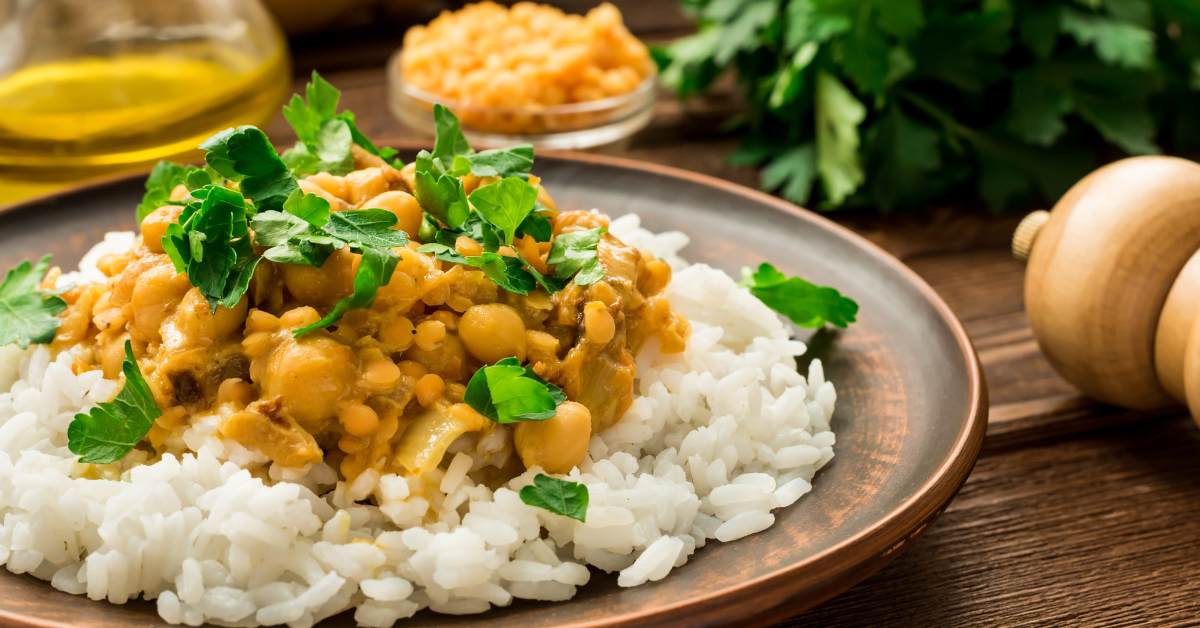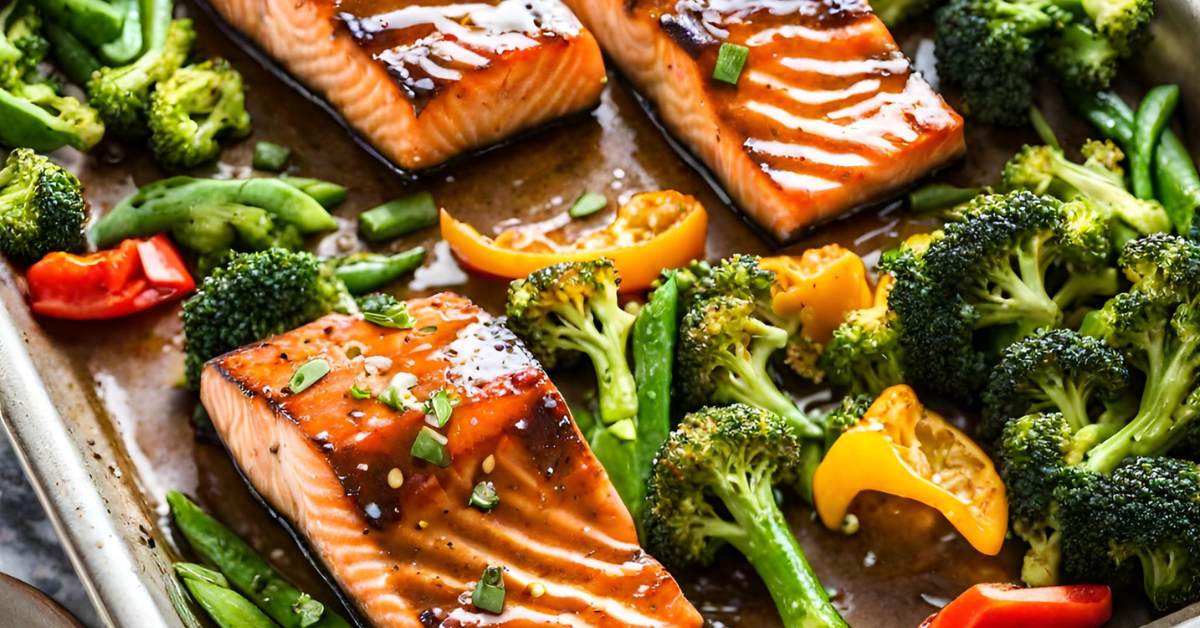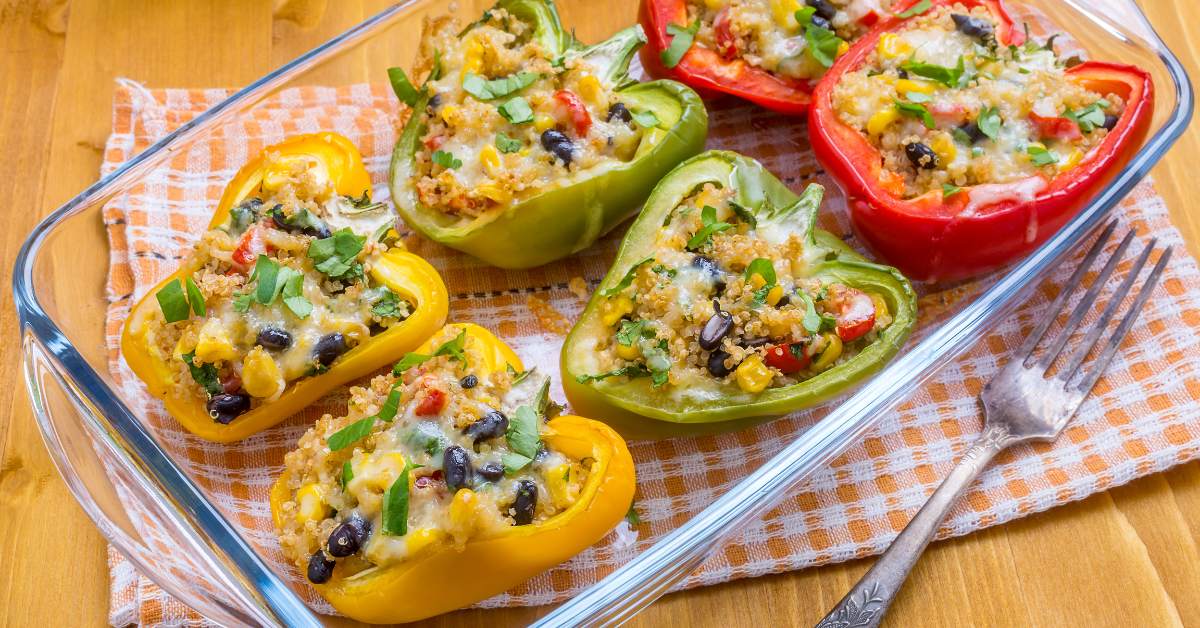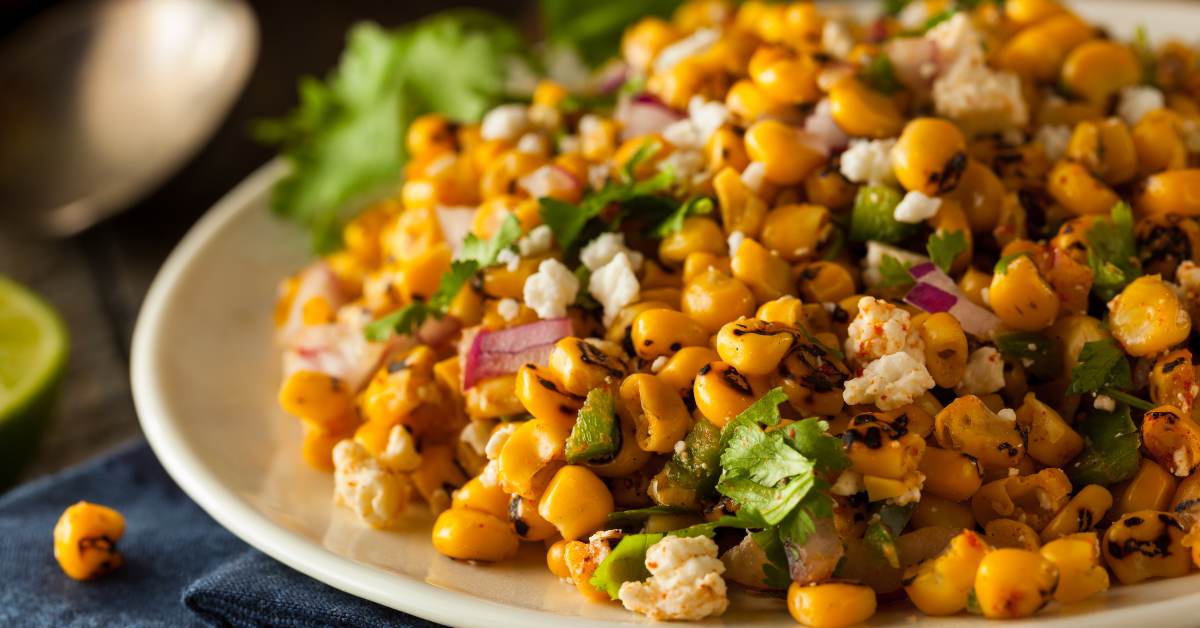If you’re drying vegetables for the first time, you might want to start with these picks that are nice and easy to dehydrate!
What Are the Best Vegetables to Dehydrate?
Dehydrating vegetables is a great way to make use of your harvest.
With this simple method, you can transform all the nutrients and fresh goodness of veggies into a product that’s no less healthy, but has a lot more uses.
1. Cauliflower
Dehydrated cauliflower can be used in a variety of recipes as well, all while being an excellent source of vitamins and minerals.
They can be turned into cauliflower mash, which is an alternative to mashed potatoes, or they can be served as a soup.
They can even be added to quinoa and millet for a protein-rich dish.
READ NEXT: How to Dry Cauliflower >
2. Butternut Squash
Although dehydrating butternut squash takes more effort than other vegetables, the work is surely worth the taste.
Packed with essential vitamins, minerals, and fatty acids, butternut squash makes the best choice for a hearty soup and delicious purees.
3. Cabbage
Cabbage isn’t a well-known option for dehydration because of its dryness, but it’s very much possible.
Once you dehydrate your cabbage, there are many things you can do with it, especially since one cabbage head yields so much.
A great source of calcium and potassium, cabbage can be made into salads, mixed with soups, and even turned into refreshing smoothies.
READ NEXT: How to Dry Cabbage 4 Different Ways!
4. Zucchini
The great thing about dehydrating zucchini is the less time for preparation. After getting your dehydrated zucchini, you have options to stuff it, bake it, or even turn it into bread.
Using zucchini is a healthy way to receive those essential vitamins, zinc, iron, and calcium, too.
5. Potatoes
Many consider themselves potato-lovers and for good reasons.
Not only are there multiple recipes for fresh potatoes, but there is also a wide variety of dishes that you can make with dehydrated potatoes.
Potatoes can be made into chips, hash browns, or mixed with salads and soups.
6. Corn
Corn is one of the easiest vegetables to dehydrate. With only a bag of corn, you can make recipes like stews, chowders, fritters, coup, and even cornmeal.
Not only is this vegetable versatile, but it’s also packed with vitamins A, C, and E with minerals like calcium and iron.
7. Sugar Snap Peas
Sugar snap peas are the easiest vegetable to dehydrate because they don’t require much preparation.
They’re a great source of vitamin A, vitamin C, Niacin, and choline. After dehydrating them, you can turn them into salads and soups.
8. Kale
Dehydrating kale can be a great way to preserve your greens so that you can eat it before pests do. If you grow kale in your backyard, you may notice the abundance of moths and worms that threaten to ruin your harvest.
Through dehydration, you can better preserve your kale and turn it into kale powder or kale chips.
READ NEXT: The in-depth guide to drying kale & how to use it!
9. Tomatoes
I know…I know…the great fruit vs vegetable debate comes into play here.
But I thought I’d include these in the list for those of you who consider it a vegetable – most chefs do!
Tomatoes are a great choice to dehydrate because of their versatility. After dehydrating your tomatoes, you’ll end up with something like the sun-dried type.
This ingredient can come in handy with numerous dishes such as pasta, soups, and salads.
Apart from its many uses, dehydrated tomatoes also have increased levels of vitamin C, vitamin K, Folate, Choline, Niacin, and Thiamin.
READ NEXT: How to Sun Dry Tomatoes >>>
10. Spinach
I love drying spinach for smoothies. Since it goes bad so fast, I always keep some dehydrated on hand.
I like to do a batch of flakes for things like spinach dip and soups. Then also do a batch of spinach powder for my kids’ favorite energy balls, and of course, smoothies.
Spinach is loaded with nutrients like magnesium, potassium, folate, and vitamin A.
And surprisingly enough, most of its calories consist of protein!
READ NEXT: How to dry spinach 4 ways!
Best Dried Veggies for Soups
Having dehydrated vegetables in your storage makes cooking soups more convenient for whenever you feel like getting them.
Vegetables can either be the star of the soup or they can enhance the flavors of the dish. Dehydrated carrots, broccoli, and potatoes can be mixed into vegetable soup or stew.
You can also puree dried vegetables like peas, celery, and squash and make them into a soup.
On the other hand, you can add dried onions, garlic, and bell peppers to make the food taste more vibrant and scrumptious.
You can even ground your dehydrated garlic to make garlic salt, which can be a perfect seasoning to your soup.
Best Dried Veggies for Snacks
Eating dehydrated vegetables for snacks is a healthy alternative for junk food and sweets.
With correct preparation, dried veggies can satisfy your cravings for something sweet, savory, and crunchy.
Vegetables that are perfect for snacks are sweet potatoes, sugar snap peas, cucumbers, carrots, and turnips.
Leafy greens like kale and spinach are also great to pair with tomato salsa and cheese dip.
Once they’re turned into chips, they become nutritious and tasty treats to satisfy your appetite.
Dehydrated Vegetable Nutrition: Are They Still Healthy?
Most people worry that dehydrating their vegetables will cause them to lose their nutrients.
But the truth is, you don’t actually lose any nutritional value when you dehydrate your vegetables.
In fact, you still get the same content as the fresh harvests. This is because when you lower the temperature of your vegetables, they retain more of their nutrients.
And so, when the water from the veggies evaporate, their nutritional content stays packed in the products and their freshness is maintained.
Top Reasons to Dehydrate Vegetables
Apart from the hundreds of recipes that you can do with dried vegetables, dehydrating also has several other benefits:
- A healthy way to preserve vegetables: Dehydrating vegetables is a smart way to keep all those nutritional components. Instead of consuming chemicals and preservatives from canned vegetables, you can get the freshness from the ones you’ve dehydrated.
- Increases shelf life: Dehydrated vegetables can last longer than those that are kept frozen. They can still be good even after months or up to a year.
- Easy to store: When vegetables are dehydrated, they lose water and shrink into a smaller, more compressed size. They become lighter too, making it easier for them to keep in your storage or to transport in different places. Plus, you won’t need to freeze or refrigerate your vegetables once dehydrated.
- Lessens prep time in the kitchen: Using dehydrated vegetables will save you time from all that washing and cutting, so you can get right into cooking the good stuff.
- Requires few materials: There are a lot of ways to dehydrate your vegetables, but none of them require a complicated process. You can use dehydration machines, homemade drying racks, or solar dehydrators.
- Saves money: You can buy vegetables in bulk when they’re in season so that you can get them for a cheaper price. In the future, when their prices have gone up, you’ll have your vegetables dehydrated and stored in your kitchen, ready for use.
How Do You Dry Vegetables in a Dehydrator?
One of the many ways to dehydrate vegetables is by using a dehydrator.
This equipment is convenient because of how simple it is to use and how quickly it can produce your desired product.
When picking the right model of a dehydrator, make sure that it can circulate the hot air evenly as you use it.
- Large Capacity: Equipped with 9 easy-to-clean Excalibur dehydrator trays, this large food dehydrator boasts 15 square feet of drying space
- Accurate Temperature Control: Features an adjustable thermostat with a range of 105 to 165 degrees F – low enough for fruits and vegetables but high enough for dehydrating meat
- Low & Slow for Immune Boost: The perfect dehydrator for food and jerky, dried fruit leather, fruit roll-up puree, pet treats, homemade yogurt, veggies, nuts, and even bread, it cooks food at 115-118 degrees max, which preserves nutrients and enzymes
- Efficient & User Friendly: This meat and fruit dehydrator dehydrates food faster, retains more nutrients, and helps food look and taste better without tray rotation thanks to patented Excalibur Hyperwave technology and horizontal Parallex drying
- Includes: Digital download Guide to Dehydration, so you can quickly and easily learn how to dehydrate all types of foods; Made in the USA with US- and globally sourced materi
Prices pulled from the Amazon Product Advertising API on:
Product prices and availability are accurate as of the date/time indicated and are subject to change. Any price and availability information displayed on [relevant Amazon Site(s), as applicable] at the time of purchase will apply to the purchase of this product.
This is an efficient feature so that you wouldn’t have to shuffle tracks. Once you’re set, follow these steps to dry your vegetables:
Put your sliced and seasoned vegetables on the dehydrator trays. Make sure that the pieces don’t overlap so that they’ll be evenly dried.
Next, turn on your dehydrator to begin the process.
Usually, vegetables require a temperature of 125°F and 8-12 hours to successfully dry.
However, the time for the dehydration process to complete also depends on how ripe the vegetable is, the humidity of the day, and the way you sliced your vegetables.
To be sure, check the instructions on your appliance to dehydrate your produce correctly.
Frequently check your vegetables when the drying time is almost over.
When done, allow vegetables to cool for about 30-60 minutes.
This is the dehydrator I recommend. It\’s built right and reliable:
How to Dehydrate Vegetables in an Oven
Using the oven is another method to dehydrate vegetables.
But this technique may be tricky because the temperature can be inconsistent. The good news is, the dehydration time will definitely be shorter.
To dehydrate with an oven, follow these steps:
First, preheat your oven to its lowest setting which is at around 170-200°F.
Then, line your baking sheets with parchment paper, or use non-stick mats. Be sure to place a cooling rack above the parchment paper to help the air circulate around your vegetables.
Place your sliced vegetables evenly on the baking sheet, making sure they’re not overlapping.
Occasionally turn your vegetables to check if they’re dry enough.
Drying time may take less than 6 hours depending on the temperature of your oven.
How to Use Dehydrated Vegetables
The beauty behind dehydrated vegetables is the wide variety of recipes and dishes you can try.
Since they last a long time, you can cook up almost anything that you want whenever you want it.
Here are a few of my favorite things to do with dehydrated vegetables:
Throw them into soups
Dehydrated vegetables are a perfect addition to a delicious soup or stew. No need to rehydrate your dried veggies; they can go right in the steaming pot of goodness!
Put them in your salads
Think of the numerous side dishes and salad possibilities you can make with a pantry of dehydrated vegetables!
To use your dried veggies, be sure to rehydrate them again so they can gain moisture and grow back to their usual shape.
Grind them into powders
Blend your dehydrated vegetables into a fine powder so you can add them into puree mixes, curries, burgers, and soups.
Turn them into flour
Using your dehydrated vegetables as flour is a great way to lessen the number of grains you consume.
Simply blend the dried product and you’re good to go!
Bake them into bread
Take your home-baked bread to another level by adding dehydrated onions, mushrooms, and sun-dried tomatoes.
Blend them into a sauce
Add layers of flavor in your dish by making a sauce from your dried vegetables. Simply throw the vegetables in a blender and add water to make sauces and marinades.
Make veggie burgers
You can add in some of your vegetable powder in your burger mix for added flavor and seasoning.
Drink them as juices
Use your vegetable powder to make juices and smoothies so you can get your nutrients in a refreshing way.
How to Store Dehydrated Vegetables
After cooling your vegetables, pack them in an air-tight container using a clean jar or Ziplock bags.
Then, label those containers with information about the vegetable and the date when you dehydrated them.
It would be convenient to have your dried vegetables measured before dehydrating them so they’ll be easy to use in the future.
Once you’re done with packing them, leave them out for at least 24 hours just to check that there’s no moisture formation.
After this, you can put your containers in a cool, dry area away from direct sunlight.
I dry veggies more than any other food, so I actually have a complete storage guide with even more tips if you want to check that out.
How Long Do Dehydrated Vegetables Last?
It’s good to know that dehydrated vegetables that are prepared and stored properly can last up to five years.
Some dried vegetables also have shelf lives for more than ten years.
This is a much longer shelf life than canned goods.
Tips & Things to Consider
- Cut your vegetables into thin slices to they can dehydrate quickly
- For larger pieces of vegetables, flip or stir then every 3-4 hours
- When using a dehydrator, turn it off towards the end to prevent it from scorching
- If you plan to eat your vegetables raw or boiled, there’s no need to steam or cook them before dehydrating them
- If the dehydrated vegetable will be cooked in the future, steam them before the drying process for about 8 minutes so they can rehydrate better
- For dehydrating corn, steam them before drying so that they become digestible
- Don’t mix lima beans with other dried vegetables. They don’t rehydrate properly.
Frequently Asked Questions
1. What veggies can I dehydrate?
You can dehydrate beans, potatoes, spinach, broccoli, onions, mushrooms, squash, cabbage, carrots, cauliflower, eggplants, peas, and corn.
2. Do you have to blanch vegetables before dehydrating?
Not for all types of vegetables. Blanching only needs to be applied for vegetables that are starchy like sugar snap peas or potatoes.











Thank you. So much information.
Sharon
Yes, so many interesting things to know about dehydrating. Thank you. Your jars of veggies are beautiful.
Thank you, Beth!
Hi Quinn!
I’m new to this but very excited to start. Bought a dehydrator that came with no instructions on how to use or how long to dehydrat items. I’ve found your information so very useful. My husband has his very own freez dryer but I wanted something a little differnt to try as well. I am interested in making the flour for my husband as he has type two diabetes and regular flour are too full of carbs. Also interested in drying garden grown hurbs to ground into powders for future use. Any help you can give will be greatly appreciated! Thanks, Robin